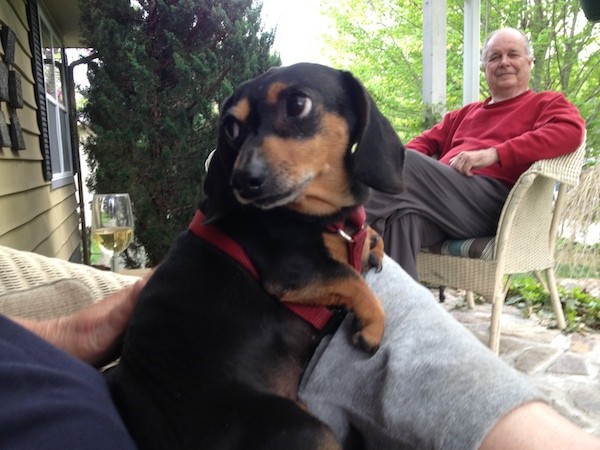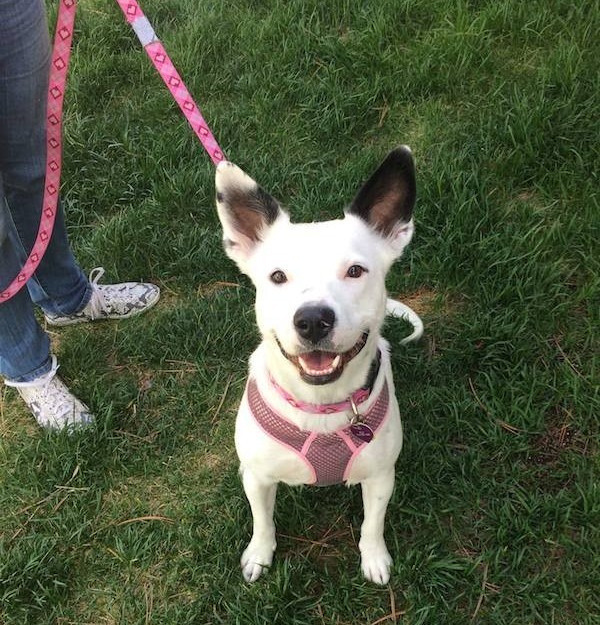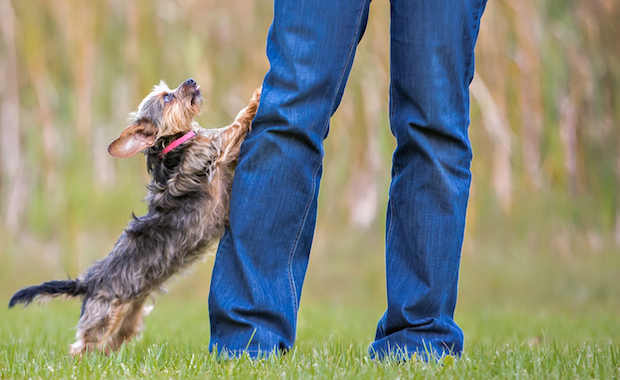It never ceases to amaze me how often, how quickly, and sometimes how subtly dogs communicate with us. During just about every consultation, I see the dog screaming in canine body language to have his needs and wants attended to, including asking for help to relieve the strong emotion of fear. Owners confound trainers when they report that “the dog bit all of the sudden and out of nowhere.”

Nowhere? Really? He didn’t give any of the many “I am uncomfortable” canine signals? These signs can include:
- Lick lipping
- Cheek puffing
- Front paw lifted
- Tail tucked or up and stiff
- Wide eyes with the whites showing (called a whale eye)
- Hair raised
- Barking, lunging, whining
- Trying to escape
- Sudden non-contextual sniffing or scratching
- Turning the eyes and body away from the threat
Dog are communicating with us all of the time. Sadly, they understand human communication far better than most of us understand dogs.
I want to share a client example that demonstrates how beautifully dogs try to express their feelings. I recently worked with an especially cute rescued pup named Jelly. She came to her owner with a deep commitment to jumping up to greet people. This behavior was likely reinforced in a previous home — humans often inadvertently “reinforce” the jump with a knee to the dog’s chest while saying (uselessly!) “Off! Off! Off!” This does not curtail the unwanted behavior but instead reinforces it through the attention given. If the dog gets something out of the jumping, she will continue to do it.

I spent time with Jelly reinforcing the heck out what behavior I did want from her — a sit and stay. She would sit. For a second, maybe two seconds, and then resume her jumping. The jumping behavior was very ingrained and very well rehearsed. After showing her what I did like (her sitting), I decided to try another tactic: I stood by the laundry room door, and the second she launched out of her sit, I didn’t say a word and immediately put myself in a quick time-out in the laundry room.
I removed what she wanted the most, and that was human attention. As I was shutting the door, I looked down to see what Jelly’s response was and saw her big, cute ears flattened on her head as the door was closing. Her entire body said it devastated her for me to shut myself away. She didn’t whine or vocalize this — you had to be watching her body to see this, and both myself and the owner saw it right away.
In this case, the dog’s distress was very apparent. I wasn’t trying to distress Jelly; I was removing myself from her repeated launching as a clear way of showing the non-verbal species that if she jumps on people, people leave the room. She got the message! I only had to leave once or twice more. Her sits lengthened on the spot.
If you want to learn more about canine body language, we highly recommend Sarah Kalnaj’s DVDs “The Language of Dogs” and “Am I Safe?” We also recommend trainer Jill Breitner’s phone app The Dog Decoder. You can also get a ton of training tips in my new book, The Midnight Dog Walkers: Positive Training and Practical Advice for Living with Reactive and Aggressive Dogs. The book is available nationwide at bookstores and at online venues.





